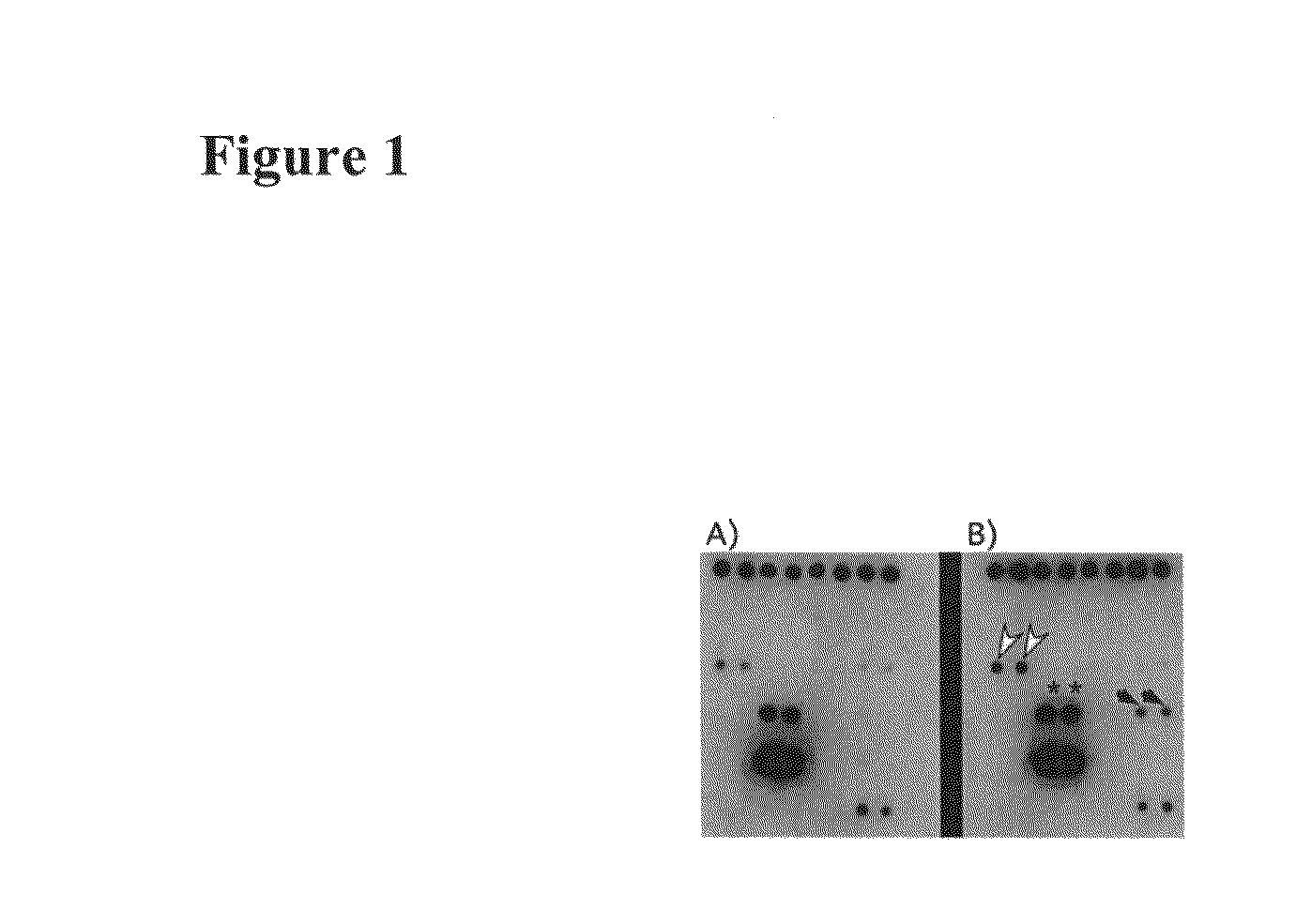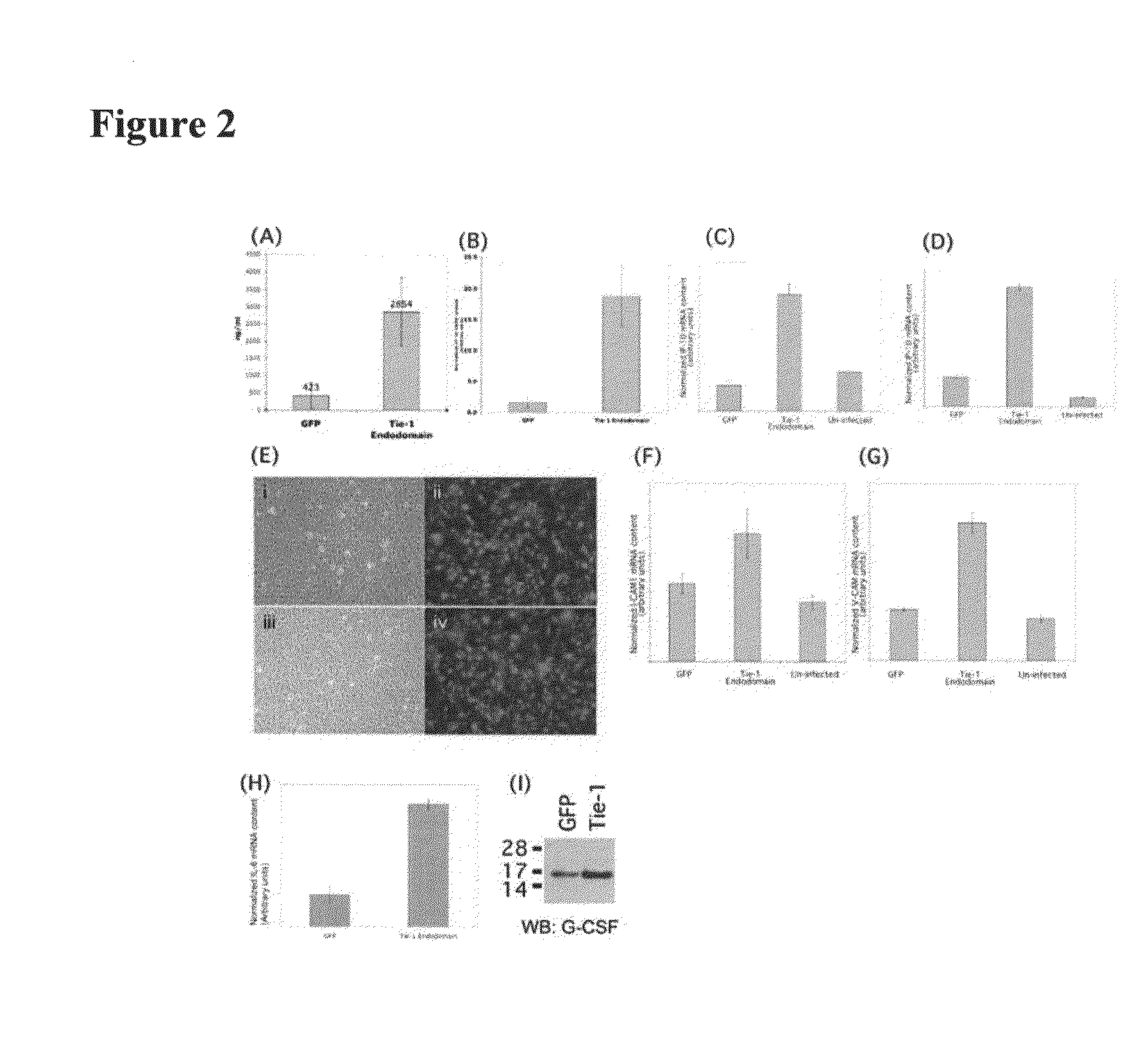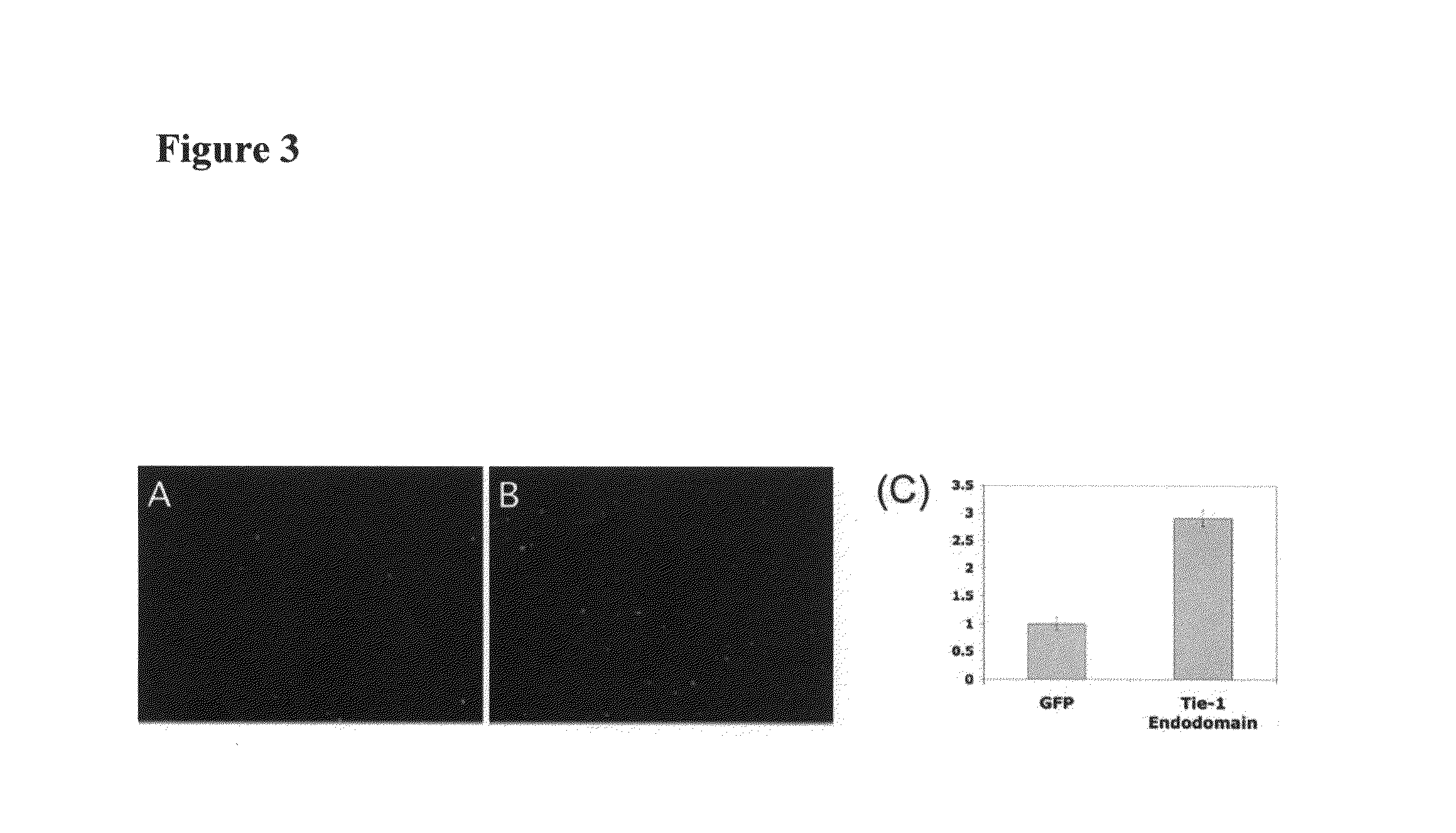Methods and compositions for the treatment and diagnosis of vascular inflammatory disorders or endothelial cell disorders
a technology of vascular inflammatory disorders and compositions, applied in the direction of drug compositions, cardiovascular disorders, peptides, etc., can solve the problems of affecting the function of the body, so as to achieve specific inhibition of the pro-inflammatory
- Summary
- Abstract
- Description
- Claims
- Application Information
AI Technical Summary
Benefits of technology
Problems solved by technology
Method used
Image
Examples
example 1
Upregulation of Proinflammatory Cytokines and Adhesion Molecules in Endothelial Cells by Overexpression of Tie-1 Endodomain
[0235]Tie-1 receptor is an endothelial specific cell surface tyrosine kinase. Genetic deletion of this protein in mice confers embryonic lethality between days 13.5 to 14.5 of gestation. In murine embryonic development, Tie-1 appears not to be required in early angiogenic processes but is important in maintaining vessel integrity. In agreement with these findings, expression knockdown of Tie-1 in zebrafish by antisense morpholino oligonucleotides does not appear to affect vessel development and integrity up to day 3 post fertilization, a period when the basic framework of the vasculature is established to support initial blood flow. However, vessels begin to regress from this point onwards. Previously patent lumens, especially the caudal artery and vein, regress and narrow, resulting in sluggish blood flow.
[0236]Since a high affinity binding, signaling ligand ha...
example 2
Expression of Tie-1 Endodomain in Endothelial Cells Enhances Attachment of Monocytic Cell Line U937
[0247]ICAM-1 and VCAM-1 are both upregulated in endothelial cells in response to Tie-1 endodomain overexpression (FIGS. 2F and 2G). Since both adhesion molecules are important in leukocyte binding to the endothelium, we performed cell adhesion assays to test whether retention of cells of monocytic lineage on HUVEC would be affected by Tie-1 endodomain.
[0248]Methods: A published procedure was followed with modifications (Kalogeris et al., Am J Physiol 276: C856-864, (1999)). 300,000 HUVE cells were seeded in each well of a 6-well plate and infected with either GFP- or Tie1 endodomain-adenovirus. Medium was changed five hours post infection. Adhesion assays were performed 24 hours later. U937 (ATCC) cells were first labeled with a red fluorescent dye using Cell Tracker Red CMTPX (Molecular Probes). 1×106 labeled U937 cells were resuspended in 0.5 ml endothelial medium and added to HUVE c...
example 3
Expression of Tie-1 Endodomain in Endothelial Cells Stimulates Migration of Smooth Muscle Cells
[0250]Activation of smooth muscle cells is an essential step in the development of atherosclerotic lesions. Since IP-10 and G-CSF are potent chemotactic agents for smooth muscle cells and we have shown that they are upregulated when Tie-1 endodomain is expressed (FIG. 2A-2I), we tested whether the conditioned medium from HUVE cells expressing Tie-1 endodomain would promote smooth muscle cell migration in vitro.
[0251]Methods: HUVECs were infected with control GFP or Tie-1 endodomain adenovirus as described above. Conditioned media were collected 48 hrs post infection, and cell debris was removed by centrifugation. The Transwell system with pore size of 5 μm in a 24-well format (Corning) was used in the migration assays. Human pulmonary artery smooth muscle cells (HPASMC, Cambrix) were seeded in the insert in 100 μl of smooth muscle cell medium with 0.5% FBS. HUVEC conditioned medium (600 μl...
PUM
| Property | Measurement | Unit |
|---|---|---|
| molecular weight | aaaaa | aaaaa |
| molecular weight | aaaaa | aaaaa |
| molecular weight | aaaaa | aaaaa |
Abstract
Description
Claims
Application Information
 Login to View More
Login to View More - R&D
- Intellectual Property
- Life Sciences
- Materials
- Tech Scout
- Unparalleled Data Quality
- Higher Quality Content
- 60% Fewer Hallucinations
Browse by: Latest US Patents, China's latest patents, Technical Efficacy Thesaurus, Application Domain, Technology Topic, Popular Technical Reports.
© 2025 PatSnap. All rights reserved.Legal|Privacy policy|Modern Slavery Act Transparency Statement|Sitemap|About US| Contact US: help@patsnap.com



